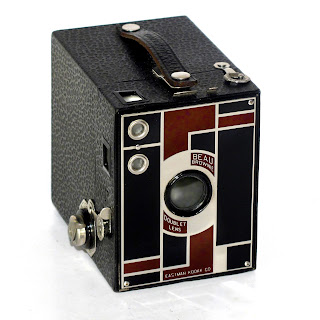That old dog from 1899 was still going strong in the 1950s.
The LP record was a new analog sound storage medium.
It was made of vinyl and less fragile than the old 78’s.
"Microgroove" and 33 rpm kept it running for 40 min/side.
A perfect choise for classical music and "albums".
A perfect choise for classical music and "albums".
A new kind of record players became necessary though.
The first players were most versatile and usable for all speeds
78, 45, 33 and 16 rpm. Two needles for 78’s or Microgroove
mounted in a light weight pickup was another welcome invention.
mounted in a light weight pickup was another welcome invention.
The EP-record (Extended Play)
Also called a "Single" was about half the size in diameter.
Half the diameter of an LP and mostly made for topical pop music and jukeboxes.
 theese are not that worn. They still sound fairly good.
theese are not that worn. They still sound fairly good.
A cheap record player that was
popular among the teenagers:
A stereo record?
The picture is in fact 3D if using the red and green eyepieces. Recorded in stereo, but hardly visible at the time you listen to it.
The decline of serious and popular vinyl era.
DJ's and Scratch was not appreciated in my generation.
Trendy way to use music experiences started in the 1980
Popular party music for very young people.
Also called a "Single" was about half the size in diameter.
Half the diameter of an LP and mostly made for topical pop music and jukeboxes.
“Singing post cards” had a revival around 1950s.
The old 78's celulliod ones shown in Blog 16 were often worn out.
Thanks to the microgrooves, 45 rpm and lightweight pickup
 theese are not that worn. They still sound fairly good.
theese are not that worn. They still sound fairly good.
Viewcards from other countries
that included some music were interesting.
Like this one from the other side of the iron curtain. Here is one card from CsikyGergely
Like this one from the other side of the iron curtain. Here is one card from CsikyGergely
Theatre in Hungary, that I found
exiting at the time.
exiting at the time.
A cheap record player that was
popular among the teenagers:
The electronic branch moved on. Transistors and printed circuits made it possible to hide the record player inside what looked like a common radio. After use the player could be lowered under a flexible sliding lid.
Personally, I preferred classical music.
The Stereophonic sound was one of the
greatest improvements on LP records ever made.
Closing my eyes, I could determine the direction
greatest improvements on LP records ever made.
Closing my eyes, I could determine the direction
of every instrument group in a symphony orchestra.
A stereo record?
The picture is in fact 3D if using the red and green eyepieces. Recorded in stereo, but hardly visible at the time you listen to it.
The decline of serious and popular vinyl era.
DJ's and Scratch was not appreciated in my generation.
Trendy way to use music experiences started in the 1980
Popular party music for very young people.
A final picture disc?
As time went by, the competition hardened. A demand for eye catching pictures increased. This "controversial" photo from 1984 was used to illustrate a LP recording of the skilled and famous actress and singer
Marilyn Monroe.
The boom of vinyl records came to an end
While the CD discs slowly took over from the analogue disks. many hi fi enthusiasts called the sound inferior. But progress went on.
At the end of the era, lots of crazy shapes were produced.
Marilyn Monroe.
The boom of vinyl records came to an end
While the CD discs slowly took over from the analogue disks. many hi fi enthusiasts called the sound inferior. But progress went on.
NO FURTHER COMMENTS ON THIS ITEM..
























































